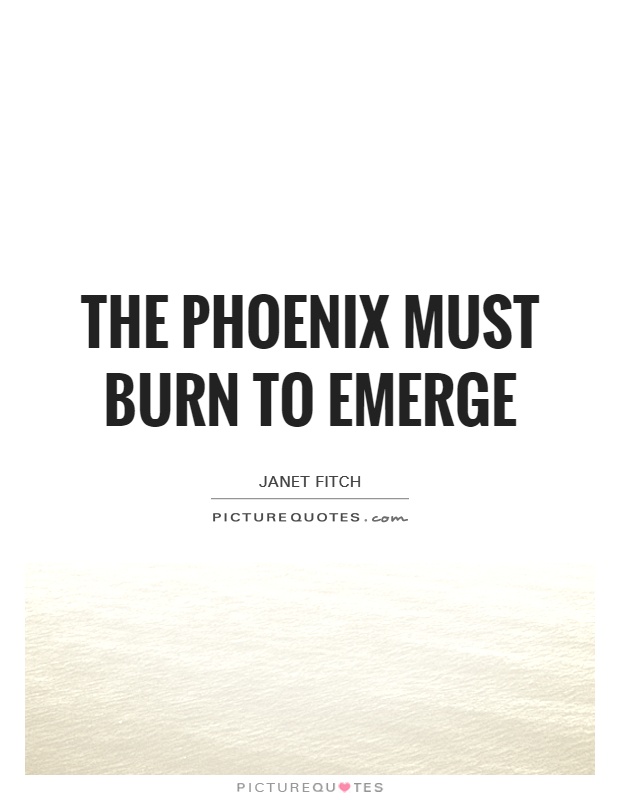The phoenix must burn to emerge

The phoenix must burn to emerge
In the world of literature, few authors have captured the essence of transformation and rebirth quite like Janet Fitch. Known for her powerful storytelling and vivid imagery, Fitch often explores themes of resilience, growth, and self-discovery in her works. One of the most poignant symbols she frequently employs is that of the phoenix, a mythical bird that is said to burst into flames and be consumed by fire, only to rise from its own ashes stronger and more beautiful than before."The phoenix must burn to emerge" is a phrase that perfectly encapsulates the central theme of many of Fitch's novels. In her acclaimed debut novel, "White Oleander," the protagonist Astrid must endure a series of trials and tribulations as she navigates the foster care system and grapples with her tumultuous relationship with her mother. Like the phoenix, Astrid must undergo a metaphorical burning in order to shed her old self and emerge as a stronger, more resilient individual.
Similarly, in Fitch's novel "Paint It Black," the protagonist Josie must confront her grief and guilt following the suicide of her boyfriend. Through her journey of self-discovery and healing, Josie must confront her inner demons and confront the darkness within herself. Like the phoenix, Josie must burn away her past in order to emerge from the ashes of her pain and sorrow.
Fitch's use of the phoenix as a symbol of transformation and rebirth is a powerful reminder that growth often requires pain and sacrifice. In order to truly evolve and become the best version of ourselves, we must be willing to confront our fears, face our demons, and embrace the flames of change. Just as the phoenix must burn in order to emerge, so too must we be willing to undergo our own trials and tribulations in order to grow and evolve.












 Friendship Quotes
Friendship Quotes Love Quotes
Love Quotes Life Quotes
Life Quotes Funny Quotes
Funny Quotes Motivational Quotes
Motivational Quotes Inspirational Quotes
Inspirational Quotes